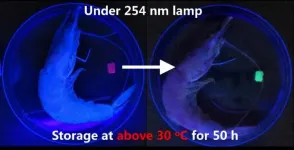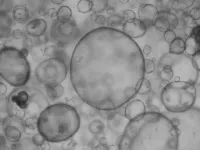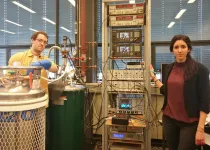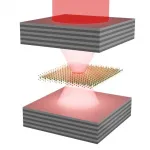(Press-News.org) Vaccination dramatically reduced COVID-19 symptomatic and asymptomatic infections in St. Jude Children's Research Hospital employees compared with their unvaccinated peers, according to a research letter that appears today in the Journal of the American Medical Association.
The study is among the first to show an association between COVID-19 vaccination and fewer asymptomatic infections. When the Pfizer-BioNTech BNT162b2 vaccine was authorized for use in the U.S., the vaccine was reported to be highly effective at preventing laboratory-confirmed COVID-19. Clinical trial data suggested that the two-dose regimen reduced symptomatic disease, including hospitalization and death. But an association with reduced asymptomatic infection was unclear.
"While further research is needed, by preventing infections, including in people who have no symptoms, there is a high possibility that vaccination will decrease transmission of SARS-CoV-2," said Diego Hijano, M.D., of the St. Jude Department of Infectious Diseases. He and Li Tang, Ph.D., of St. Jude Biostatistics, are the first authors of the report. Tang is also the corresponding author.
The study involved 5,217 St. Jude employees who were eligible under Tennessee state guidelines for vaccination between Dec. 17, 2020, and March 20, 2021. More than 58% of employees were vaccinated during that period. Most workers received both doses.
Overall, vaccination reduced the risk of asymptomatic and symptomatic SARS-CoV-2 infection by 79% in vaccinated employees compared with their unvaccinated colleagues. An analysis of asymptomatic infections alone found vaccination reduced the risk by 72%.
Protection was even greater for employees who completed two doses. A week or more after receiving the second dose, vaccinated employees were 96% less likely than unvaccinated workers to become infected with SARS-CoV-2. When researchers looked just at asymptomatic infections, vaccination reduced the risk by 90%.
Finding SARS-CoV-2 infections
The research stems from a program that St. Jude leaders began in March 2020 to protect patients and employees from the pandemic virus.
The effort included targeted testing for employees with COVID-19 symptoms or known exposure to the pandemic virus. The plan also involved routine, laboratory testing of asymptomatic employees. Nasal swabs were collected at least weekly from self-reported asymptomatic on-campus workers to perform polymerase chain reaction to detect asymptomatic SARS-CoV-2 infection.
"This study was possible because St. Jude invested in resources to determine how best to control the disease and protect our patients and employees," Tang said. "Few places then or now provide such broad asymptomatic testing."
Hijano said, "Testing has been invaluable to the institutional COVID-19 mitigation plan. In the end, the testing also serves as a unique tool that helps to fill in critical knowledge gaps."
Results by the numbers
During the study, 236 of the 5,217 employees included in the analysis tested positive for SARS-CoV-2. They included 185 unvaccinated employees and 51 of the 3,052 workers who had received at least one dose of the vaccine.
Almost half of the positive cases, 108, reported no symptoms upon testing. The asymptomatic cases included 20 employees who had received one vaccine dose and three who tested positive within seven days of the second dose. "The results are a reminder of the many hidden cases in the population, which makes containing the virus a big challenge," Tang said.
The study group included a cross-section of employees in regard to race and gender. More than 80% of employees were younger than 65 years old. The vaccinated group included a higher percentage of health care staff, 47%, than the unvaccinated employees, 25.7%.
INFORMATION:
Authors and funding
The senior authors are James Hoffman, Pharm.D., and Randall Hayden, M.D., of St. Jude. The other authors are Aditya Gaur, Terrence Geiger and Ellis Neufeld, all of St. Jude.
The research was funded in part by ALSAC, the St. Jude fundraising and awareness organization.
St. Jude Children's Research Hospital
St. Jude Children's Research Hospital is leading the way the world understands, treats and cures childhood cancer and other life-threatening diseases. It is the only National Cancer Institute-designated Comprehensive Cancer Center devoted solely to children. Treatments developed at St. Jude have helped push the overall childhood cancer survival rate from 20% to 80% since the hospital opened more than 50 years ago. St. Jude freely shares the breakthroughs it makes, and every child saved at St. Jude means doctors and scientists worldwide can use that knowledge to save thousands more children. Families never receive a bill from St. Jude for treatment, travel, housing and food -- because all a family should worry about is helping their child live. To learn more, visit END
New research combines cutting-edge engineering with animal behaviour to explain the origins of efficient swimming in Nature's underwater acrobats: Seals and Sea Lions.
Seals and sea lions are fast swimming ocean predators that use their flippers to literally fly through the water. But not all seals are the same: some swim with their front flippers while others propel themselves with their back feet.
In Australia, we have fur seals and sea lions that have wing-like front flippers specialised for swimming, while in the Northern Hemisphere, grey and harbor seals have stubby, clawed paws and swim with their feet. But the reasons ...
Sea turtles are known for relying on magnetic signatures to find their way across thousands of miles to the very beaches where they hatched. Now, researchers reporting in the journal Current Biology on May 6 have some of the first solid evidence that sharks also rely on magnetic fields for their long-distance forays across the sea.
"It had been unresolved how sharks managed to successfully navigate during migration to targeted locations," said Save Our Seas Foundation project leader Bryan Keller, also of Florida State University Coastal and Marine Laboratory. "This research supports the theory that they use the earth's magnetic field to help them find their way; it's nature's GPS."
Researchers ...
Scientists in China and Germany have designed an artificial color-changing material that mimics chameleon skin, with luminogens (molecules that make crystals glow) organized into different core and shell hydrogel layers instead of one uniform matrix. The findings, published May 6 in the journal Cell Reports Physical Science, demonstrate that a two-luminogen hydrogel chemosensor developed with this design can detect seafood freshness by changing color in response to amine vapors released by microbes as fish spoils. The material may also be used to advance the development of stretchable electronics, dynamic camouflaging robots, and anticounterfeiting technologies.
"This novel core-shell layout does not require a careful choice of luminogen pairs, nor does it require an ...
Mini-organs or organoids play a big role in the future of medicine. Their countless applications can help develop and implement tailored therapies for each patient. The revolutionary development of organoids started in Utrecht with a group of curious scientists. But when organoid research starting booming, confusion arose. What exactly is an organoid? Are there different types, and if so, what should they be called? A group of experts from around the world now publishes the first consensus on what is - and what is not - an organoid.
Bart Spee, Associate Professor at Utrecht University's faculty of Veterinary Medicine, is ...
The "Third Pole" of the Earth, the high mountain ranges of Asia, bears the largest number of glaciers outside the polar regions. A Sino-Swiss research team has revealed the dramatic increase in flood risk that could occur across Earth's icy Third Pole in response to ongoing climate change. Focusing on the threat from new lakes forming in front of rapidly retreating glaciers, a team, led by researchers from the University of Geneva (UNIGE), Switzerland, demonstrated that the related flood risk to communities and their infrastructure could almost triple. ...
New research by Joseph Wu, Edgar Engelman, and colleagues at Stanford University, US has advanced an old concept to develop a new strategy to train the immune system of mice to recognize cancer cells. This work is based on the recent understanding that induced pluripotent stem cells (iPSCs), which are stem cells generated from skin or blood cells through a method called reprogramming, produce a large set of antigens that have overlap to a specific type of pancreatic cancer and that these similarities can be used for potential clinical benefit.
It is well known that vaccines can be highly effective ...
In spintronics, the magnetic moment of electrons (spin) is used to transfer and manipulate information. An ultra-compact 2D spin-logic circuitry could be built from 2D materials that can transport the spin information over long distances and also provide strong spin-polarization of charge current. Experiments by physicists at the University of Groningen (The Netherlands) and Colombia University (USA) suggest that magnetic graphene can be the ultimate choice for these 2D spin-logic devices as it efficiently converts charge to spin current and can transfer this strong spin-polarization ...
At extremely low temperatures, matter often behaves differently than in normal conditions. At temperatures only a few degrees above absolute zero (-273 degrees Celsius), physical particles may give up their independence and merge for a short time into a single object in which all the particles share the same properties. Such structures are known as Bose-Einstein Condensates, and they represent a special aggregate state of matter.
An international team of researchers led by physicists Dr Carlos Anton-Solanas and Professor Christian Schneider from the UNiversity of Oldenburg has now succeeded for the first time in generating this unusual quantum state in charge carrier complexes that are closely linked ...
Hydrogen-based fuels should primarily be used in sectors such as aviation or industrial processes that cannot be electrified, finds a team of researchers. Producing these fuels is too inefficient, costly and their availability too uncertain, to broadly replace fossil fuels for instance in cars or heating houses. For most sectors, directly using electricity for instance in battery electric cars or heat pumps makes more economic sense. Universally relying on hydrogen-based fuels instead and keeping combustion technologies threatens to lock in a further fossil fuel dependency ...
ROCHESTER, Minn. ? Heart disease can take a number of forms, but some types of heart disease, such as asymptomatic low ejection fraction, can be hard to recognize, especially in the early stages when treatment would be most effective. The ECG AI-Guided Screening for Low Ejection Fraction, or EAGLE, trial set out to determine whether an artificial intelligence (AI) screening tool developed to detect low ejection fraction using data from an EKG could improve the diagnosis of this condition in routine practice. Study findings are published in Nature Medicine.
Systolic low ejection fraction is defined as the heart's inability to contract strongly enough with each beat to pump at least 50% of the blood from ...





